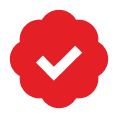
A JavaScript framework is a collection of JavaScript code libraries that provide a web developer with pre-written code for routine programming tasks. Frameworks are structures with a particular context and help you create web applications within that context. JavaScript is a powerful coding language used in both frontend and backend development.
It is completely possible to build strong web applications without JavaScript frameworks, but frameworks provide a template that handles common programming patterns. Each time you have to build an application, you don’t need to write code for every single feature from scratch. Instead, you can build upon an existing feature set.
All JavaScript frameworks, like most other frameworks, provide some rules and guidelines. Using these rules and guidelines, any developer can make complex applications faster and more efficiently than if they decided to build from scratch. The rules and guidelines help shape and organize your website or web application too!
For example, think about a potter’s wheel where you can build pots. The potter’s wheel is your framework; it has certain consistencies that you have to work with. The wheel rotates, and you can use that rotation to build pots of different shapes and sizes.
You can build pots, plates, cups, bowls, or even cylindrical sculptures. But you can’t build a house with it; you need to find a different framework for that.
Continue reading






